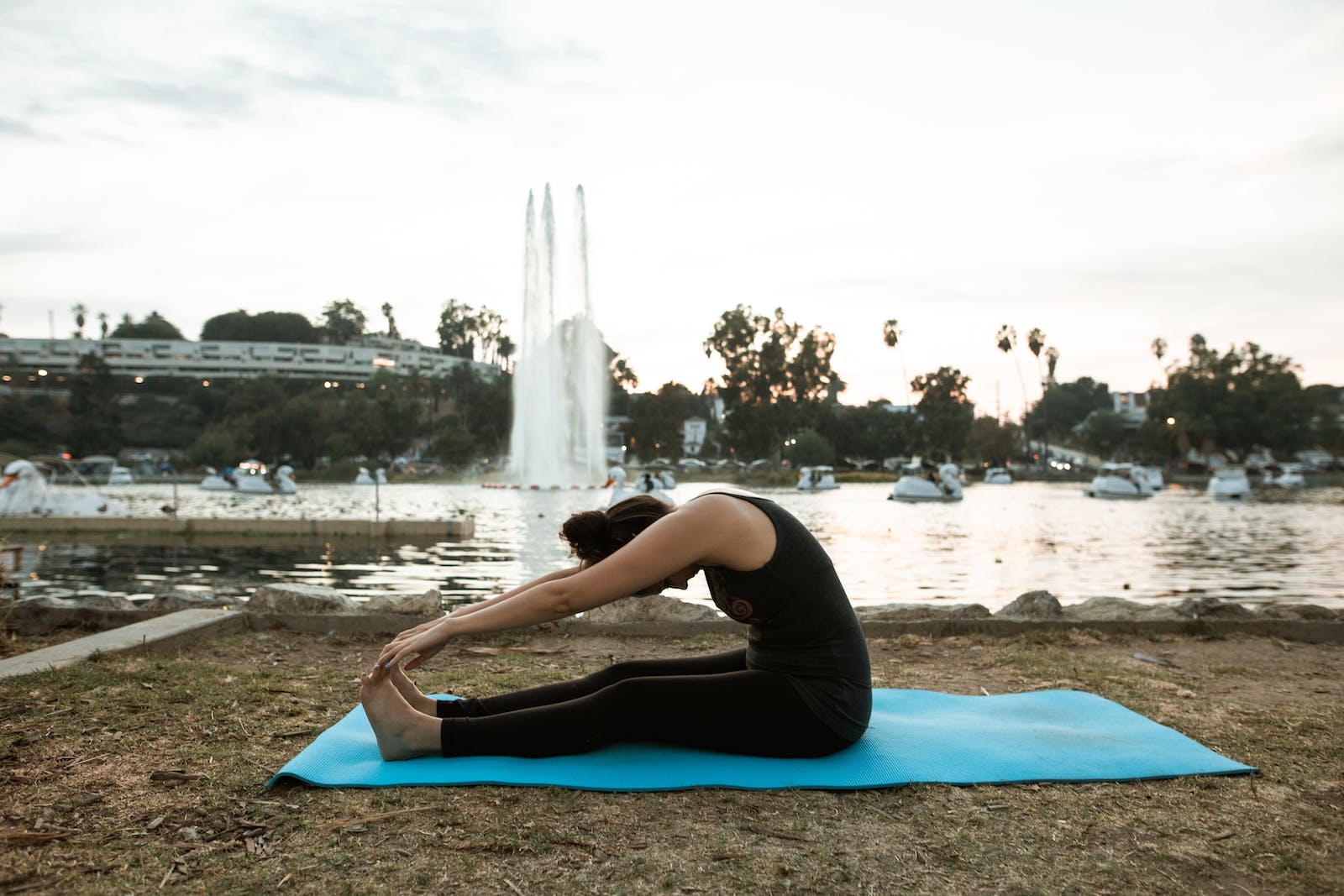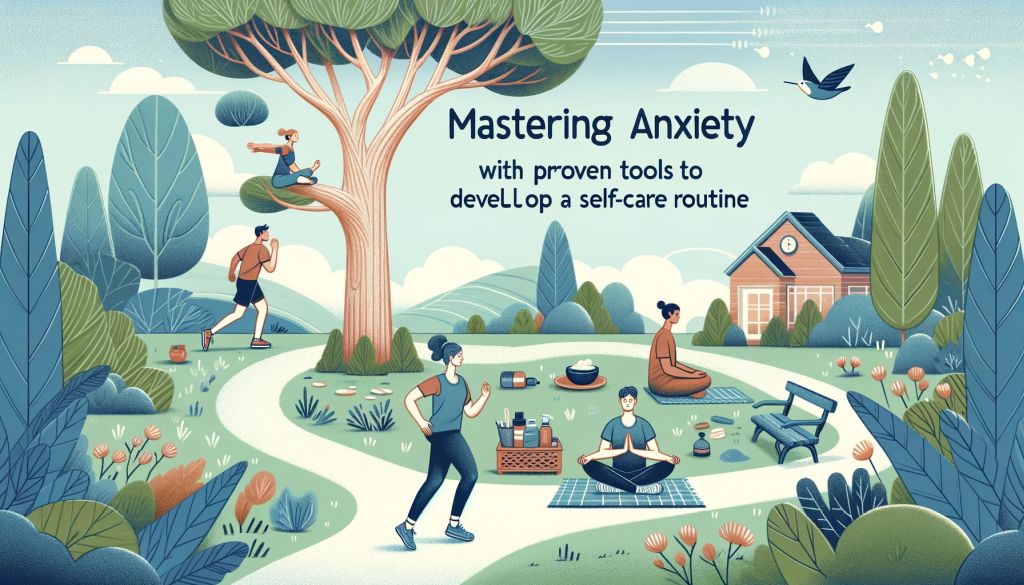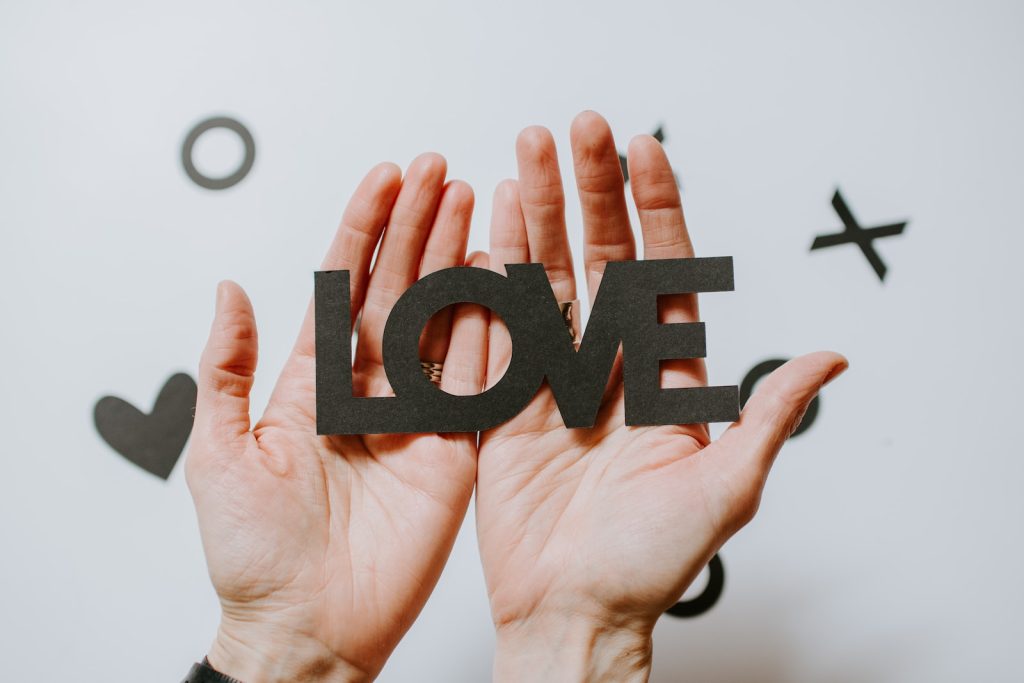From Anxious to Assured – Unlocking the Secrets of Inner Calm
Last year, I trembled in a crowded subway, my breath shallow.
Anxiety gripped me tightly. But today, I walk the same path with a serene mind, thanks to a few simple yet powerful tools.
This transformation wasn’t just luck but a journey of discovery and practice. I’m here to share the steps that led me from panic to peace.
Starting today, you’ll learn practical strategies to navigate anxiety’s fog and find your inner calm.
If you struggle with anxiety, you’re not alone.
Anxiety is a shared experience affecting millions of people worldwide.
It can manifest in many different ways, from mild worry to debilitating panic attacks.
Fortunately, there are many tools and strategies you can use to manage anxiety and find inner calm.
“It’s not stress that kills Us; it is our Reaction to it.” – Hans Selye
My Take on This Quote
Stress is not our enemy; our response is critical.
This quote by Hans Selye emphasizes stress itself is not inherently harmful. Our stress reaction determines its impact on our health and well-being.
Recognizing that we can choose our responses empowers us to manage stress effectively. Control your reaction, not the stress.
What This Means for You
You hold the reins to your stress. Instead of eliminating stress, focus on cultivating resilience and adaptive responses.
This shift in perspective can transform stress from a threat to a challenge to navigate.
By developing mindfulness and emotional regulation, you can minimize the adverse effects of stress. Steer your reactions towards resilience and balance.
Unveiling the Path to Peace: Mastering Anxiety with Proven Tools
One of the most important things you can do to manage anxiety is to develop a self-care routine.
It might include exercise, meditation, or spending time in nature. It’s also important to prioritize sleep, eat a healthy diet, and avoid substances that can exacerbate anxiety, such as caffeine and alcohol.
Taking care of your physical health can help you feel more grounded and resilient in the face of stress.
Another essential tool for managing anxiety is to develop a mindfulness practice.
Mindfulness involves paying attention to the present moment without judgment.
It can help you become more aware of your thoughts and feelings, which can help you recognize when you’re feeling anxious and take steps to manage it.
Mindfulness can also help you cultivate a sense of inner calm and peace, even during difficult circumstances.
Understanding Anxiety
If you’re reading this article, chances are you or someone you know is struggling with anxiety.
Anxiety is a natural stress response, but it can become overwhelming and disruptive to your daily life if left unchecked.
Understanding anxiety is the first Step towards managing it and finding inner calm.
Symptoms and Causes
Anxiety can manifest in a variety of ways, including physical symptoms like sweating, trembling, and rapid heartbeat, as well as psychological symptoms like fear, worry, and panic.
A range of causes, including stress, trauma, genetics, and environmental factors, can trigger these symptoms.
Anxiety and Depression
Anxiety and depression are closely related, and many people who struggle with anxiety also experience depression. Anxiety and depression often share similar symptoms, such as fatigue, difficulty concentrating, and feelings of hopelessness.
It’s essential to seek professional help if you’re experiencing symptoms of anxiety or depression.
Psychology Behind Anxiety
Anxiety is a complex psychological phenomenon that involves a range of factors, including the release of adrenaline and the activation of the sympathetic nervous system.
When you experience anxiety, your body goes into “fight or flight” mode, which can cause physical and psychological symptoms.
Learning to manage your anxiety involves understanding the psychology behind it and developing coping strategies that work for you.
Overall, understanding anxiety is an essential first step toward managing it and finding inner calm.
By recognizing the symptoms and causes of anxiety, as well as the psychology behind it, you can begin to develop effective strategies for coping with anxiety and regaining control of your life.
Developing a Mindful Routine
Incorporating mindfulness into your daily routine can be an effective way to manage anxiety and find inner calm.
By creating a consistent schedule that includes mindfulness practices, you can develop a routine that promotes relaxation and reduces stress.
Incorporating Mindfulness
There are many mindfulness techniques that you can incorporate into your daily routine.
A straightforward technique is to practice deep breathing exercises.
By taking slow, deep breaths, you can calm your mind and reduce feelings of anxiety.
You can also try progressive muscle relaxation, which involves tensing and relaxing different muscle groups to release tension.
Another effective mindfulness practice is meditation. You can start with just a few minutes daily and gradually increase your meditation time.
During meditation, you can focus on your breath or repeat a calming phrase to help quiet your mind.
The Role of a Consistent Schedule
Creating a consistent schedule with mindfulness practices can help you develop a routine that promotes relaxation and reduces stress.
Set aside time daily for mindfulness practices, such as deep breathing exercises or meditation.
You can also incorporate mindfulness into other activities, such as walking or practicing yoga.
By making mindfulness a regular part of your routine, you can develop a sense of calm and reduce feelings of anxiety.
Remember to be patient with yourself and start with small, manageable steps.
Over time, you can build on your mindfulness practices and develop a routine that works for you.
Relaxation Techniques for Stress Relief
If you are struggling with anxiety or stress, relaxation techniques can help you find inner calm.
Here are a few techniques that you can try to reduce stress and promote relaxation.
Deep Breathing Exercises
Deep breathing exercises can help you calm your mind and reduce stress.
To practice deep breathing, find a quiet and comfortable place to sit or lie down. Place one hand on your chest and the other on your belly.
Take a slow, deep breath through your nose, and feel your belly rise. Hold your breath for a few seconds, and then exhale slowly through your mouth.
Repeat this process for several minutes, focusing on your breath and letting go of distracting thoughts.
Progressive Muscle Relaxation
Progressive muscle relaxation involves tensing and relaxing different muscle groups to promote relaxation.
Start by sitting or lying down in a comfortable position. Tense the muscles in your feet and hold for a few seconds, then release and relax.
Move up to your calves, thighs, and so on until you have tensed and relaxed all your muscle groups.
This technique can help you release tension and reduce stress.
Yoga and Meditation
Yoga and meditation are powerful tools for reducing stress and promoting relaxation. Yoga combines physical postures with deep breathing and meditation to help you release tension and calm your mind.
Meditation involves focusing on your breath or a specific object to promote relaxation and reduce stress.
Both practices can help you find inner calm and reduce anxiety.
In conclusion, relaxation techniques can help you manage stress and anxiety and promote overall well-being.
Try incorporating these techniques into your daily routine to find inner calm and reduce stress.
Lifestyle Adjustments to Reduce Anxiety
Managing anxiety requires a holistic approach that includes lifestyle changes.
Adjusting certain aspects of your daily routine can reduce anxiety and improve your overall well-being.
Here are some lifestyle adjustments that can help you find inner calm:
Exercise and Physical Activity
Regular exercise is one of the most effective ways to reduce anxiety.
Exercise releases endorphins, natural mood boosters that can help you feel more relaxed and positive.
Physical activity also helps you burn off excess energy and tension, which can contribute to feelings of anxiety.
Aim for at least 30 minutes of moderate daily exercise, such as brisk walking, jogging, or cycling.
You can also try yoga or other mind-body exercises that combine physical movement with relaxation techniques.
Healthy Sleep Habits
Getting enough sleep is essential for managing anxiety. Lack of sleep can exacerbate anxiety symptoms and make it harder to cope with stress.
Aim for at least 7-8 hours of sleep every night, and establish a regular sleep routine.
Avoid caffeine and alcohol before bedtime, and create a relaxing environment in your bedroom.
You can also try relaxation techniques such as deep breathing or meditation to help you fall asleep.
Importance of Hobbies
Engaging in hobbies and leisure activities can help you reduce anxiety by providing a sense of enjoyment and fulfillment.
Hobbies can also help you relax and take your mind off of stressful thoughts. Choose hobbies that
you enjoy, and that allows you to express yourself creatively.
Whether painting, gardening, or playing music, find activities that bring you joy and make you feel good.
By making these lifestyle adjustments, you can reduce anxiety and improve your overall quality of life.
Remember to be patient and consistent with your efforts, and don’t hesitate to seek professional help if you need it.
Cultivating Support Networks
Managing anxiety can be challenging, but it’s important to remember that you don’t have to do it alone.
Cultivating a support network can provide you with the tools and resources you need to cope with anxiety and find inner calm.
Here are some ways to build and maintain a support network:
Seeking Professional Help
One of the most effective ways to manage anxiety is to seek the help of a therapist or mental health professional.
A therapist can provide you with the tools and strategies you need to cope with anxiety and improve your overall mental health.
They can also help you identify the root causes of your anxiety and develop a personalized treatment plan to address them.
When seeking a therapist, it’s essential to find someone who specializes in anxiety and has experience working with patients who have similar symptoms to yours.
You can ask for recommendations from your primary care physician, friends, or family. You can also search for therapists in your area online.
Building a Personal Support System
In addition to seeking professional help, building a personal support system can also be beneficial in managing anxiety.
It can include friends, family members, or support groups. Having people you can talk to and rely on can provide emotional support and help you feel less alone.
When building a personal support system, it’s essential to communicate your needs and boundaries.
Let your loved ones know what you’re going through and how they can support you. You can also consider joining a support group for individuals with anxiety.
It can provide you with a sense of community and allow you to connect with others who are going through similar experiences.
Remember, managing anxiety is a journey, and it’s essential to have a support network in place to help you along the way.
Don’t be afraid to seek professional help or contact loved ones for support.
With the right tools and resources, you can find inner calm and improve your mental health.
Practical Tools for Everyday Calm
Managing anxiety can be challenging, but there are practical tools you can use to find inner calm.
Here are some techniques to help you stay focused and regulate your emotions.
Grounding Techniques
Grounding techniques can help you stay present and focused.
One technique is to focus on your senses. Take a few deep breaths and then focus on what you can see, hear, feel, taste, and smell.
It can help you stay in the moment and avoid getting lost in anxious thoughts.
Another grounding technique is to use physical sensations to calm your mind.
You can try pressing your feet firmly into the ground or holding a cold object like ice.
This can help you feel more connected to your body and less overwhelmed by your thoughts.
Focusing on Gratitude and Acceptance
Focusing on gratitude and acceptance can help shift your perspective and reduce anxiety. One way to do this is to keep a gratitude journal.
Each day, write down three things you are grateful for. It can help you focus on the positive aspects of your life and reduce stress.
Another technique is to practice acceptance. It means accepting your thoughts and feelings without judgment.
When you notice anxious thoughts, try to observe them without getting caught up in them.
Remember that thoughts are not facts; you can choose how to respond to them.
Self-Regulation
Self-regulation is an essential part of managing anxiety. It means learning to regulate your emotions and respond to stress healthily.
One technique is deep breathing. Take a few deep breaths, focusing on your breath as you inhale and exhale. It can help you feel calmer and more centered.
Another technique is progressive muscle relaxation. It involves tensing and relaxing each muscle group, from your toes to your head.
It can help you release tension and reduce anxiety.
Mental Well-Being
Taking care of your mental well-being is essential for managing anxiety.
It means getting enough sleep, eating a healthy diet, and staying active. It also means taking time for yourself, whether practicing mindfulness, reading a book, or spending time with loved ones.
Remember, managing anxiety takes time and practice.
Be patient with yourself, and don’t be afraid to seek help if you need it. With the right tools and support, you can find inner calm and live a more peaceful life.
Overcoming Negative Thoughts and Self-Compassion
If you struggle with anxiety, negative thoughts can be a common occurrence.
These thoughts can be self-critical or focused on the worst-case scenario. Over time, negative thoughts can lead to feelings of anxiety and even depression.
However, there are ways to overcome negative thoughts and promote self-compassion.
Awareness and Distraction
One way to overcome negative thoughts is to become aware of them.
When you notice a negative thought, try to identify what triggered it. Was it a specific situation or person? Once you identify the trigger, you can work on changing your response to it.
Another way to overcome negative thoughts is through distraction.
Try to distract yourself with a positive activity when you notice a negative thought. It can be anything from going for a walk to listening to music.
The goal is to shift your focus away from the negative thought and onto something positive.
Practicing Self-Compassion
Practicing self-compassion can also help overcome negative thoughts.
Self-compassion involves treating yourself with kindness and understanding.
Instead of criticizing yourself for your negative thoughts, accept them without judgment.
One way to practice self-compassion is through positive self-talk.
When you notice a negative thought, reframe it into a positive one.
For example, if you’re feeling anxious about a job interview, try thinking, “I’m going to fail,” instead of thinking, “I’m prepared and capable.”
Another way to practice self-compassion is through mindfulness.
Mindfulness involves being present in the moment without judgment.
When you notice a negative thought, try to focus on your breath and bring your attention back to the present moment.
In conclusion, overcoming negative thoughts and practicing self-compassion can help manage anxiety.
By becoming aware of negative thoughts and distracting yourself, you can shift your focus to positive activities.
Additionally, by practicing self-compassion through positive self-talk and mindfulness, you can accept your negative thoughts without judgment and promote inner calm.
Living with Anxiety: Embracing Inner Peace
Living with anxiety can be overwhelming and challenging. It can affect your mental well-being and make it difficult to enjoy life.
However, it’s important to remember that anxiety is manageable, and some tools can help you find inner peace.
One of the first steps to embracing inner peace is to acknowledge your anxiety and accept it as a part of your life.
It can help you to let go of the shame and guilt that often come with anxiety.
Instead of fighting against your anxiety, try to observe it with curiosity and compassion. It can help you to develop a more positive relationship with your anxiety.
Another tool for finding inner peace is mindfulness.
Mindfulness involves paying attention to the present moment without judgment.
It can help you to become more aware of your thoughts and feelings and to respond to them more constructively.
You can practice mindfulness by focusing on your breath, body sensations, or the sounds around you.
In addition to mindfulness, many other tools can help you manage your anxiety and find inner peace. These include:
- Exercise: Exercise can help reduce anxiety by releasing endorphins, natural mood boosters.
- Self-care: Taking care of yourself can help you to feel more relaxed and less stressed. It can include getting enough sleep, eating a healthy diet, and engaging in enjoyable activities.
- Social support: Talking to friends and family can help you to feel less alone and more supported. You can also consider joining a support group or seeking professional help.
By embracing your anxiety and using tools like mindfulness, exercise, self-care, and social support, you can manage your anxiety and find inner peace.
Remember that it’s okay to ask for help and that you don’t have to face anxiety alone.
Managing Anxiety: Simple Tools for Your Inner World
Managing anxiety and finding inner calm can be achieved through various tools and techniques. Some effective methods include:
Mindfulness Meditation – Mindfulness meditation can help calm the mind and reduce anxiety. Second Step – https://www.second-step.co.uk/managing-anxiety-understanding-anxiety-and-finding-inner-calm/.
Breathing and Relaxation Techniques. Deep breathing exercises and relaxation techniques can activate the body’s relaxation response, reducing anxiety and restoring inner balance.
Cielo Treatment Center – https://www.cielotreatmentcenter.com/post/managing-anxiety-7-practical-tips-for-finding-peace-and-calm.
Stoic Lessons. Practicing stoicism provides practical tools and strategies to manage anxiety and navigate life’s challenges with composure.
Exercise – Regular physical activity is a natural way to reduce anxiety and promote well-being—strategies for Success – https://www.strategiesforsuccessaz.com/blog/7-effective-tips-for-managing-anxiety-and-finding-peace.
These tools, among others, can contribute to managing anxiety and finding inner calm.
Conclusion
Managing anxiety is an ongoing journey that requires patience, persistence, and a willingness to try new techniques.
By incorporating the tools and strategies discussed in this article, you can take control of your anxiety and find inner calm.
Remember to prioritize self-care, such as getting enough sleep, eating a balanced diet, and exercising regularly.
These practices can help reduce anxiety and improve your overall well-being.
In addition, consider incorporating mindfulness techniques into your daily routine.
Mindfulness meditation, deep breathing exercises, and visualization can all effectively calm your mind and reduce anxiety.
Don’t be afraid to seek professional help if you need it. Therapy, medication, and other forms of treatment can be beneficial for managing anxiety.
Finally, be patient and kind to yourself.
Managing anxiety is not always easy, but with time and practice, you can find the tools that work best for you and live a fulfilling life.
Elizabeth Redd: I am a passionate advocate for Health and Healing, dedicated to empowering individuals to live their best lives.
As the founder and publisher of Health and Healing, I have established myself as a guiding force in the wellness industry.
I am committed to providing the latest research, holistic approaches, and inspiring stories to open new possibilities for your health and healing journey.
Learn more about Elizabeth and Join Us at Health and Healing. Also, check out My About Page.













0 Comments